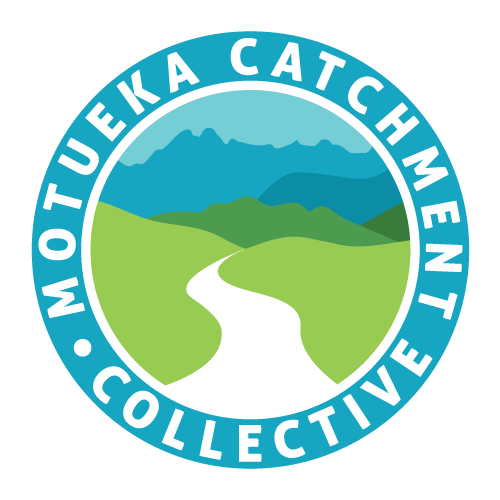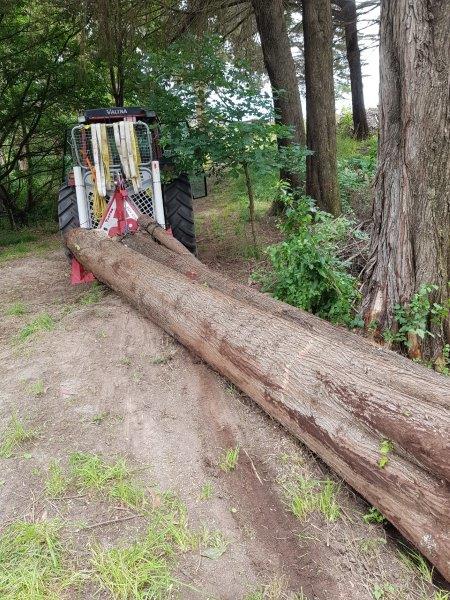Small scale wood milling in Orinoco
The journey of converting land to mixed species woodlots
Roger May bought his 24-hectare property near Ngātīmoti in 1986. At that time, it was a combination of grass, weeds (including a lot of Old Man’s Beard), kanuka, gorse and blackberry. He said there may have been one tree fern and a few fuchsia.
The first thing he did when he moved in 36 years ago was to start planting a variety of trees in the gullies to protect the land from erosion, and stop sediment entering the local waterway, the Strachan Stream which joins the Orinoco River. He said the trees took off, filling the gullies where previously there was just gorse and grass. He said however, that some of those trees have ended up being a bit too successful, particularly two species of cherry (Prunus avian and Prunus serotina). Although not planted, sycamores are also a problem as they spread like a weed and have created a carpet in places. Roger says they’ve now probably taken over Old Man’s Beard as the biggest problem weed on his property. Roger would also recommend not planting cherry species, Robinia, and Acacia dealbata, as these can also spread too readily.
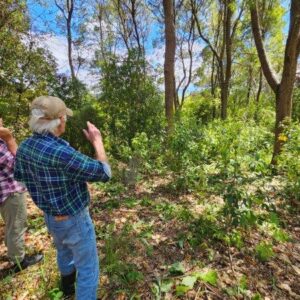
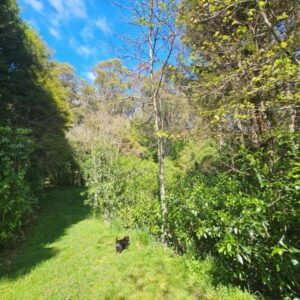
Since this initial planting, Roger has established the majority of his hilly property in a mixture of native and exotic softwood and hardwood trees. Roger reckons tree lucerne is a great one to plant first as these act as a good nurse plant as it grows quickly and creates a good environment for other trees to establish. Roger’s sourced most of his planted trees from Westbank Natives and Appletons. However, most of his trees have actually self-seeded, spread by the birds so come at no cost.
Roger says if you plant exotic hardwoods widely spaced to let light in, you often get self-seeded natives. There are heaps of birds nowadays. They enjoy the open canopies and having lots to eat.
Species on his property include:
Native (mostly self-sown) – kahikatea, matai, tōtara, mahoe, five finger (whauwhaupaku), kaikōmako, kōwhai, marbleleaf (putaputawētā), kanuka, various coprosma species and divaricating shrubs, red and black matipo, various tree ferns, rangiora, and black, silver and red beech.
Exotic (planted) – Eucalyptus, macrocarpa, blackwood, European ash and beech, elm, robinia, tree lucerne, red alder, English, Turkey, scarlet and red oak
Back in 1986 only skylarks, hawks and pukeko were present. Now there are flocks of kererū, tūī, bellbirds (korimako), warblers, shining cuckoos, piwakawaka (fantails), waxeyes, kōtare (kingfisher), paradise ducks, an occasional white-faced heron (kōtuku), shags (kawau), falcons and numerous introduced species.
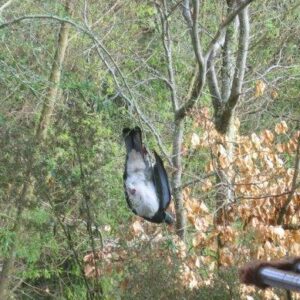
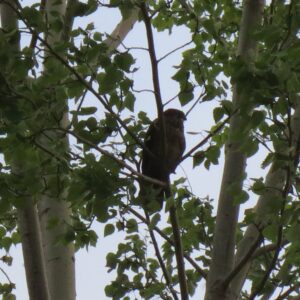
Setting up a small scale logging and milling operation
Roger didn’t plant and establish the trees just for amenity purposes, although they do create a very pleasant environment, evidenced by these very attractive European beech which are right by Roger’s house.
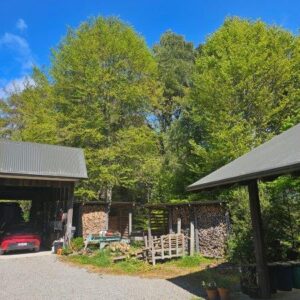
Roger said he’d be unlikely to remove these as he’s formed an attachment to them. Roger was keen to create a small scale forestry operation for many of the other trees.
Roger’s forestry consultancy company, Tomorrow’s Forests, specialises in innovative forestry solutions focusing on a mixture of exotic and indigenous tree species with continuous cover forestry rather than clear felling. This is a land use and industry he strongly supports and would like to see expand in this region. Here’s an example of a landowner Roger provided advice to in the Motueka Valley – https://www.tomorrowsforests.co.nz/examples. Because of this, Roger was keen to establish a small selective harvesting and milling operation on his property.
Although many may not know it, alternative species trees are growing and being commercially harvested throughout New Zealand. This is an extract from a guidance document produced by Ministry for Primary Industries about growing alternative forest species:
New Zealand already has over 70,000 hectares of alternative species growing, planted from the early days of the NZ Forest Service (1920s) onwards. A number of small-scale sawmills operate throughout New Zealand, processing and marketing alternative timbers. These businesses are found both in permanent locations and operating as mobile or ‘portable’ mills which travel to site. Some sawmills specialise in only one species (most commonly cypresses), while others handle a range of species. Products include flooring and decking timbers, farm timbers, garden landscaping timbers, and high-end joinery timbers.
Roger has some specialised equipment to do this job. He uses a 70 horse power 4×4 tractor with a radio-controlled 6.5 tonne European winch (pictured below). The tractor has a 100 metre rope that is pulled out with a chain attached around a felled log attaching the rope onto the chain.
“It’s time consuming but cheap” says Roger.

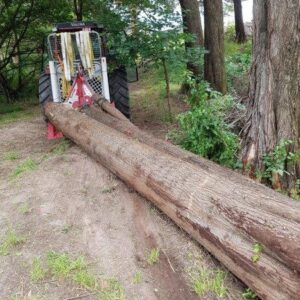
Down the bottom of Roger’s property is an area used for milling where he has a portable sawmill set up – pictured below and in this video.
From this, he has set up a small milling operation which can be run by two people. The timber gets used for tongue and groove flooring, along with building cladding. Roger lists it on trademe and people come with small orders.
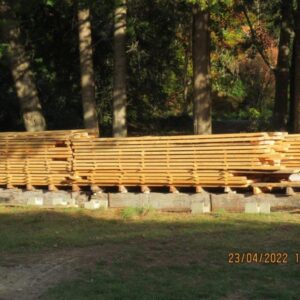

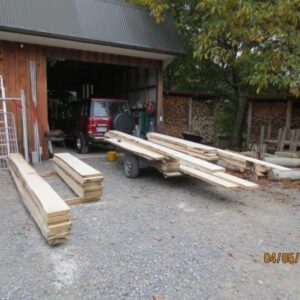
Because of the higher value of the species (compared to Radiata), the whole operation from felling to milling and machining is quite profitable, even at this scale, and Roger’s rather busy “other” job as a consultant, Roger’s operation has demonstrated how achievable it is to establish alternative species woodlots and mill the timber for a good return. Roger says:
“The timber from these exotic softwoods and hardwoods are more valuable than radiata (approximately $280 per cubic metre of log as opposed to $120 for Radiata logs), so this makes it economically feasible to log like this in smaller quantities without clear felling, and it has a much lower impact on the environment. But I don’t sell my logs – it’s more profitable to mill them into planks and sometimes machine those into panelling or flooring ready for use”
Roger discussed how his equipment could be used as a community resource. He would like to see the establishment of regional hubs which would require 10 hectare of land, drying sheds, two or three sawmills, and a tractor with winch. Local timber growers would bring their logs there to mill them. People would then go to the hub to buy different types of wood for their projects, be it kitchen benchtops, cabinetry, flooring, or cladding etc. Roger says “This approach creates no damage, and produces high quality timber.”
The success of this approach is evidenced by Justin Wells, who has operated Logs 2 Lumber from the Aniseed Valley in the Tasman District since 2012. Logs 2 Lumber primarily mills eucalyptus woods and the occasional native timber from the South Island. See this article about his operation.
Are you interested in exploring this as a land use on your property?
If this is something you’re interested in exploring, there are a number of places you could go to get advice:
- This guidance document, published in 2023 gives a good overview of growing alternative exotic forest species
- Te Uru Rakau, New Zealand Forest Service, provides free advice to landowners about the emissions trading scheme (ETS), establishing native and exotic trees for a range of purposes, and help landowners navigating regulations administered by MPI including the NES-CF and the Forests Act. You can contact the Forestry Support Team on forestserviceadvice@mpi.govt.nz There is also advice to be found on their website Discover the benefits of trees | Canopy
- The New Zealand Farm Forestry Association. See this article along with other articles and information on their website.
- This article is quite a good run down of different species options for NZ conditions.
- Forestry consultants like Roger.
